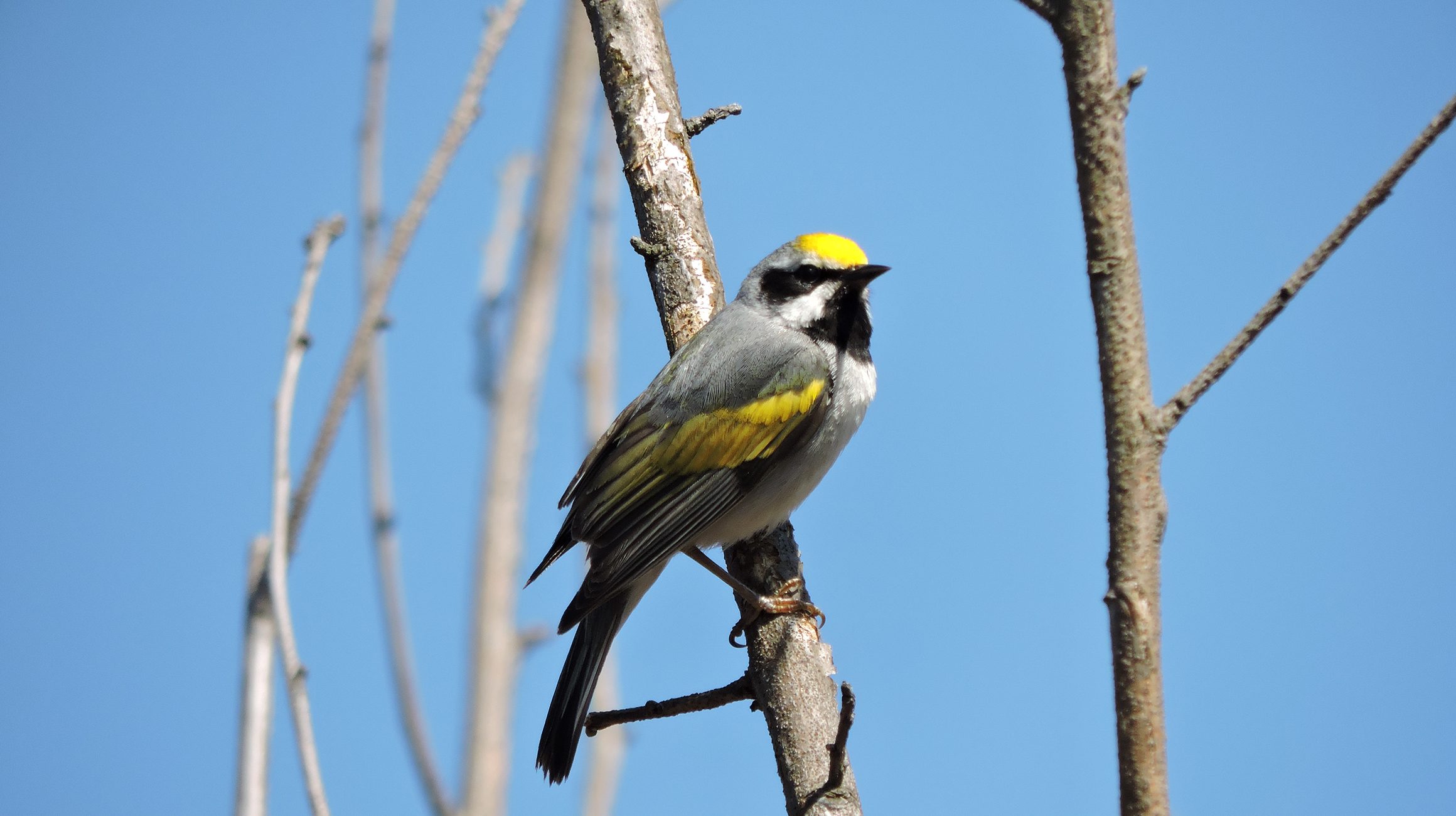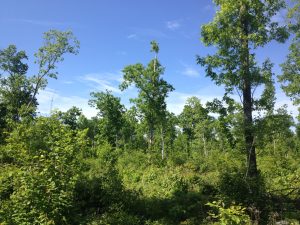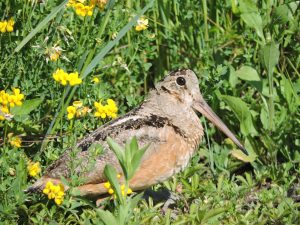The long-term decline of young forest habitat and associated wildlife species such as the Golden-winged Warbler is a major conservation issue in the Eastern United States. In response to this conservation concern, the Working Lands for Wildlife’s Golden-winged Warbler effort and a Regional Conservation Partnership between the Natural Resources Conservation Service (NRCS) and the American Bird Conservancy aim to create and restore young forest habitat on private land. These efforts are focused in the Appalachian states and Western Great Lakes. Since 2012, 293 private landowners have signed contracts through these programs to implement conservation practices for young forest habitat over 11,000 acres in MD, NJ, PA, MN, and WI.
Ongoing ecological evaluations of these management efforts have shown positive outcomes for Golden-winged Warbler. However, maintaining the quality of this young forest habitat depends partly on whether or not landowners continue managing properties after program contracts end. Therefore, human dimensions researchers at Virginia Tech worked with biologists at Indiana University of Pennsylvania to understand how and why landowners manage their properties following these NRCS conservation programs. Integrating human dimensions research will help managers understand how long-lasting the benefits of young forest management may be due to landowner behavior. Whether landowners choose to continue management for young forest is an important issue for the continuity of young forest habitat, which requires renewal on a timescale of around 10-20 years.
In addition to evaluating post-program management intentions, this study also examined how outreach to private landowners can shape social outcomes of conservation program participation. The ecological monitoring process for managed properties involved two methods of outreach to landowners— field technician site visits and communication of site-specific monitoring results to landowners. Technicians visited enrolled properties to monitor for birds and vegetation re-growth. The research team communicated results from this monitoring process to each landowner in mailed packets that included lists of bird species detected on monitored properties.
The human dimensions researchers conducted a telephone survey of landowners who had participated in the NRCS program and the subsequent ecological monitoring between 2012 and 2016. The goal of the survey was to investigate landowner post-program management intentions and possible effects of the outreach methods on landowners.
Research Insights
- There were a variety of landowner motivations for participating in NRCS young forest programs including motivations to benefit forest health, hunting, and specific wildlife species.
- Most landowners were interested in continuing management for young forests after program participation, either by re-enrolling in NRCS programs or through management without further cost-share.
- Landowners who accompanied biological technicians on site visits had higher agency trust and more positive perceptions of program outcomes. Mailings with monitoring results had limited effects in comparison.
Outcomes
Findings from this study were incorporated into monitoring related outreach to landowners in the NRCS young forest programs. Result mailings sent in fall 2017 had a greater focus on forest health, and technicians were encouraged to take landowners on site visits if there was interest.
Our results underline the importance and potential of direct interactions between conservation professionals and landowners. Both in person outreach administered by biologists and result mailings should be considered as worthwhile components of other conservation program evaluations on private lands.
To learn more about this study, please contact Seth Lutter: lutter@vt.edu or Ashley Dayer: dayer@vt.edu.



